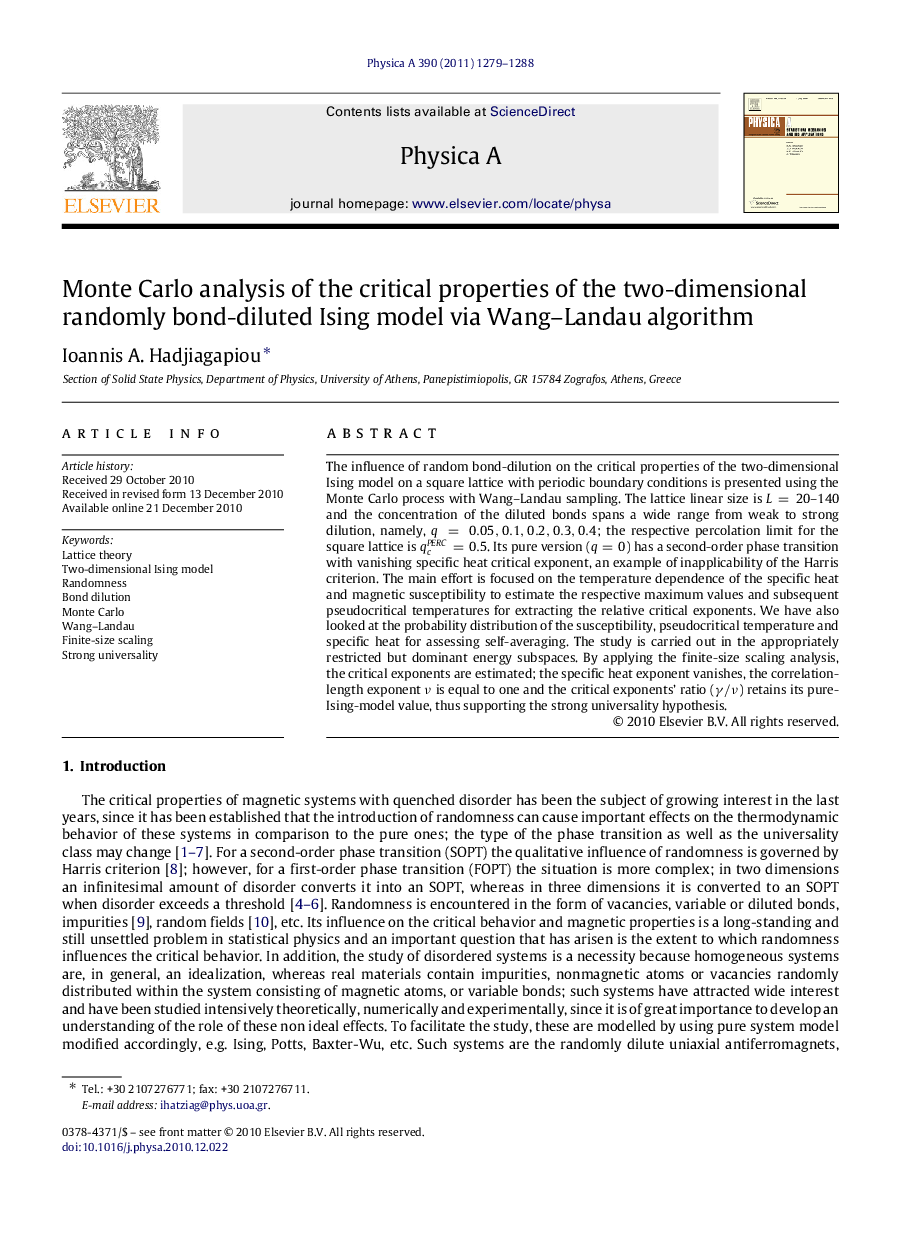| Article ID | Journal | Published Year | Pages | File Type |
|---|---|---|---|---|
| 978684 | Physica A: Statistical Mechanics and its Applications | 2011 | 10 Pages |
The influence of random bond-dilution on the critical properties of the two-dimensional Ising model on a square lattice with periodic boundary conditions is presented using the Monte Carlo process with Wang–Landau sampling. The lattice linear size is L=20–140L=20–140 and the concentration of the diluted bonds spans a wide range from weak to strong dilution, namely, q=0.05,0.1,0.2,0.3,0.4q=0.05,0.1,0.2,0.3,0.4; the respective percolation limit for the square lattice is qcPERC=0.5. Its pure version (q=0q=0) has a second-order phase transition with vanishing specific heat critical exponent, an example of inapplicability of the Harris criterion. The main effort is focused on the temperature dependence of the specific heat and magnetic susceptibility to estimate the respective maximum values and subsequent pseudocritical temperatures for extracting the relative critical exponents. We have also looked at the probability distribution of the susceptibility, pseudocritical temperature and specific heat for assessing self-averaging. The study is carried out in the appropriately restricted but dominant energy subspaces. By applying the finite-size scaling analysis, the critical exponents are estimated; the specific heat exponent vanishes, the correlation-length exponent νν is equal to one and the critical exponents’ ratio (γ/νγ/ν) retains its pure-Ising-model value, thus supporting the strong universality hypothesis.
Research highlights► System belongs to the Ising universality class. ► Strong universality scenario verified. ► Wang–Landau algorithm. ► Dominant energy subspaces.
